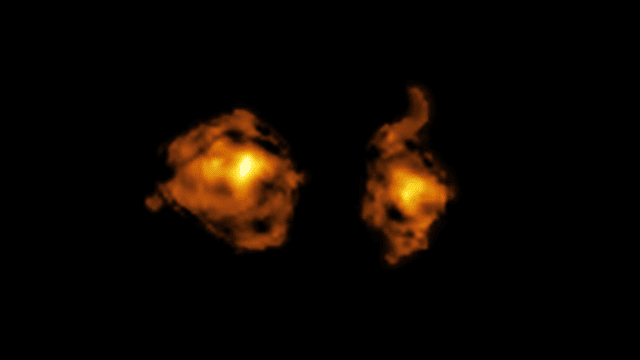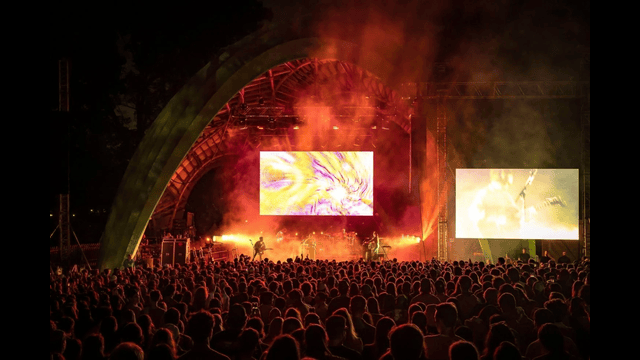
A photo captured by the ALMA telescope reveals the amount of molecular gas present in the two galaxies locked in the deep space clash. CNN
Scientists have captured a stunning sight in deep space. For the first time, they saw two galaxies in the middle of a powerful cosmic clash. This rare discovery shows one galaxy blasting the other with intense radiation. The galactic showdown happened about 11 billion light-years away.
The galaxies are moving toward each other at over 1.1 million miles per hour. The attacking galaxy has a bright center, known as a quasar, which sends out strong beams of energy. These blasts tear apart gas clouds in the other galaxy, making it hard for new stars to form.
Radiation from black hole behind the attack
The quasar sits at the heart of a giant black hole. Matter spirals into the black hole, creating extreme heat and light. This powerful energy shoots out into space, striking nearby objects.
Each burst from the quasar is about 1,000 times stronger than the radiation in our galaxy. The beams break apart hydrogen molecules in the nearby galaxy, stopping stars from being born. Without dense gas clouds, star formation becomes nearly impossible.
One of the researchers, Pasquier Noterdaeme, called this event a “cosmic joust.” He said, “It’s really like finding a needle in a haystack.”
Galaxy light helps reveal rare scene
The team used large telescopes in Chile to study the scene. They spotted a strange pattern of light and wanted a closer look. With better tools, they saw that there were two galaxies involved, not one. The quasar’s brightness had made it hard to notice the second galaxy at first.
Even though the galaxies seem close, they are thousands of light-years apart. But the radiation is strong enough to affect both. The team used detailed images to measure the gas density and distance.
This moment happened long ago. Since the light took billions of years to reach Earth, the galaxies may have already merged.
Mergers were more common in early space
Long ago, galaxy mergers were more frequent. The universe was denser, and galaxies often pulled each other close. Scientists call this period the “noon of the universe,” when stars formed very fast. Today, galaxy clashes still happen, but not as often.
Even our own Milky Way will one day collide with the nearby Andromeda galaxy. But whether all galaxy mergers look like this one is still unknown.
New discoveries ahead
This discovery helps scientists understand how galaxies form and change over time. It may also help explain how quasars affect nearby objects. While such powerful quasars are rare, they teach us a lot about the early universe.
“It’s the first time we can really see how a quasar affects gas in another galaxy,” said Sergei Balashev, one of the researchers.
The battle between galaxies has opened a new door in space research. More such discoveries could help us learn about the birth of galaxies and their life over time.















